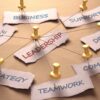Disengagement and the Future of Work: Trends and Predictions for a Post-Pandemic World
The COVID-19 pandemic has forced organizations worldwide to adapt to new ways of working, with many employees now working remotely or in hybrid work models. While these changes have brought about new opportunities and benefits, they have also presented significant challenges. One of the biggest challenges facing organizations today is employee disengagement. Disengaged employees can lead to lower productivity, higher turnover rates, and decreased morale, all of which can have a negative impact on an organization’s bottom line.
The pandemic has also accelerated existing trends in remote work, highlighting the need for strong leadership skills to maintain engagement and productivity. Leaders and employees alike must adapt to new ways of working and learn new digital skills to keep up with the rapidly changing business landscape. The future of work is uncertain, but it is clear that organizations must prioritize employee engagement and wellbeing to succeed in the post-pandemic world.
We will explore the critical role of employee engagement in creating a high-performance culture, the importance of office design in fostering a sense of belonging and community among employees, and the need for leaders and employees to develop new skills in response to changing workplace trends. We will also offer practical tips and strategies for leaders and HR professionals to boost engagement among their teams, create a hybrid workplace that combines the best aspects of in-person and remote work, and develop new skills to stay competitive in the post-pandemic job market. By the end of this article, readers will have a comprehensive understanding of the current issues facing the workforce, and they will be equipped with the knowledge and tools needed to shape the future of work in their organizations.
Trends and Predictions for a Post-Pandemic World
The COVID-19 pandemic has fundamentally changed the way we work and live, and the future of work is rapidly evolving. As organizations adjust to new ways of working, leaders must be proactive in understanding the trends and predictions for the post-pandemic world. Here, we discuss the key trends shaping the future of work and provide insights on how leaders can adapt and thrive.
One of the most significant trends in the future of work is the rise of remote and hybrid work models. According to a survey by the World Economic Forum, 84% of employers are planning to rapidly digitalize their work processes, including a significant expansion of remote work. Additionally, McKinsey Global Institute predicts that remote work could represent up to 20% of the workforce in advanced economies, which represents a four-fold increase from pre-pandemic levels.
This shift towards remote work has highlighted the need for digital skills among employees. With digital transformation and automation taking place at an unprecedented rate, the workforce must adapt to stay competitive. Harvard Business Review cites a study that shows that 64% of employees will need to develop new digital skills in the next two years. Leaders must prioritize training and development programs to ensure that their workforce has the necessary skills to succeed in the post-pandemic world.
Another critical trend shaping the future of work is the importance of employee engagement and well-being. According to the World Economic Forum, a sense of belonging and purpose is essential for employee wellness and productivity. As remote and hybrid work models become more prevalent, leaders must find new ways to foster a sense of community and connection among their employees. Additionally, leaders must prioritize employee well-being by offering mental health support and creating a culture of work-life balance.
In the coming years, leaders will need to adapt to these trends to succeed in the post-pandemic world. By offering flexible work arrangements, prioritizing employee training and development, and promoting a culture of engagement and wellness, leaders can create a high-performance culture that adapts to the rapidly changing business landscape.
Employee Engagement in a Post-Pandemic World
Employee engagement is a critical factor in organizational success. Engaged employees are more productive, more committed to their work, and more likely to stay with their employer long-term. In a post-pandemic world, maintaining engagement is particularly challenging due to the rise of hybrid and remote work models.
One of the unique challenges of maintaining engagement in a hybrid or remote work environment is a lack of social interaction. Employees who work remotely or in a hybrid model may feel isolated and disconnected from their colleagues, which can lead to decreased motivation and productivity. Leaders must find new ways to foster a sense of community and connection among their teams.
To boost engagement among their teams, leaders can implement practical strategies such as regular check-ins, team-building activities, and flexible work arrangements. Regular check-ins with employees can help leaders stay connected and identify potential issues early on. Team-building activities can help foster a sense of community and belonging among remote or hybrid teams. Flexible work arrangements, such as allowing employees to set their own schedules or work from home, can also help boost engagement by promoting work-life balance and reducing stress.
Real-world examples of successful engagement initiatives can provide leaders with inspiration and ideas for their own organizations. For example, the software company GitLab has implemented an “all-remote” work model, which has allowed the company to attract top talent from around the world and promote a culture of transparency and collaboration. Another example is the food delivery service DoorDash, which offers a variety of engagement initiatives, including virtual game nights and wellness programs, to promote employee well-being and connection.
Maintaining employee engagement in a post-pandemic world is critical for organizational success. Leaders must find new ways to foster a sense of community and connection among their teams and implement practical strategies such as regular check-ins, team-building activities, and flexible work arrangements. By prioritizing employee engagement, leaders can create a high-performance culture that adapts to the rapidly changing business landscape.
The Future of the Office: Designing Spaces for a Post-Pandemic World
The COVID-19 crisis has forced businesses to rethink their traditional office designs to ensure the health and safety of their employees. The pandemic has highlighted the benefits of remote and hybrid work models, such as increased flexibility and reduced commute times. As a result, businesses are now exploring how they can create a hybrid workplace that combines the best aspects of in-person and remote work.
One way businesses can create a hybrid workplace is by offering flexible office hours. This allows employees to come into the office when they need to collaborate with their team or work on specific projects, while also giving them the freedom to work from home when they need to focus or take care of personal obligations. Hybrid meetings are another effective way to combine the best aspects of in-person and remote work. These meetings can be conducted in-person or virtually, depending on the needs of the team.
Office design also plays a critical role in fostering a sense of belonging and community among employees. By creating a welcoming and comfortable environment, businesses can help their employees feel more connected to their colleagues and to the organization as a whole. For example, some businesses are incorporating natural elements such as plants and water features into their office designs to promote relaxation and reduce stress. Others are creating communal areas such as kitchens and lounges where employees can gather and socialize.
Real-world examples of successful office redesigns can provide businesses with inspiration and ideas for their own spaces. For instance, the financial services company Goldman Sachs recently redesigned its New York headquarters to include more collaborative workspaces and cutting-edge technology. The new design features an open floor plan with movable walls, allowing teams to easily reconfigure their space as needed.
In conclusion, the COVID-19 crisis has forced businesses to rethink their office designs to ensure the health and safety of their employees. Creating a hybrid workplace that combines the best aspects of in-person and remote work can offer businesses increased flexibility and reduce commute times. Office design plays a critical role in fostering a sense of belonging and community among employees, and real-world examples of successful redesigns can provide businesses with inspiration and ideas for their own spaces.
Developing New Skills for the Future of Work
The COVID-19 pandemic has accelerated the adoption of remote and hybrid work models, placing an even greater emphasis on the need for employees to possess a diverse range of skills. In a rapidly changing job market, workers must be able to adapt to new technologies and business models while also possessing critical soft skills such as communication, collaboration, and problem-solving.
To remain competitive in the post-pandemic workplace, business leaders and HR professionals must take an active role in developing new skills among their employees. This requires a strategic approach to talent development that includes identifying skill gaps, creating personalized learning plans, and providing ongoing support and feedback.
One way to encourage skill development is to provide employees with access to online courses, webinars, and other training resources. These resources can help employees develop new digital skills, such as data analysis and social media marketing, while also honing critical soft skills such as emotional intelligence and leadership.
Another effective approach is to establish mentorship programs that pair experienced employees with those who are looking to develop new skills. These programs not only provide employees with valuable guidance and support, but they also foster a sense of community and collaboration within the organization.
Finally, businesses can develop cross-functional teams that bring together employees from different departments to work on a common project. These teams not only help employees develop new skills but also promote collaboration and communication across the organization.
HR professionals play a critical role in identifying and developing internal talent. By creating a culture of continuous learning and development, businesses can attract and retain top talent while also improving employee engagement and organizational performance.
Real-world examples of successful skills development initiatives include programs such as AT&T’s Future Ready program, which provides employees with access to online courses and certification programs, and Pfizer’s EDGE program, which focuses on developing employees’ leadership and communication skills.
Investing in employee training and development is essential for businesses seeking to maintain a competitive edge in the post-pandemic world. By providing employees with the resources and support they need to develop new skills, businesses can improve employee engagement, boost productivity, and ultimately achieve long-term success.
Conclusion: Shaping the Future of Work
We discussed the importance of remote and hybrid work models, the need for digital and soft skills, and the role of office design in fostering a sense of community among employees. We also provided practical tips and strategies for boosting engagement, developing new skills, and redesigning the office space
As we look towards the future of work, it is clear that leaders who prioritize employee well-being and development will have a competitive advantage in the labor market. By investing in their people, businesses can create a more engaged and productive workforce, leading to increased revenue and profitability.









